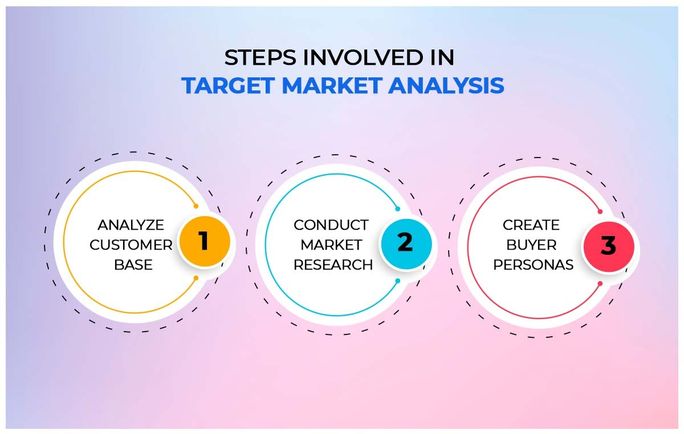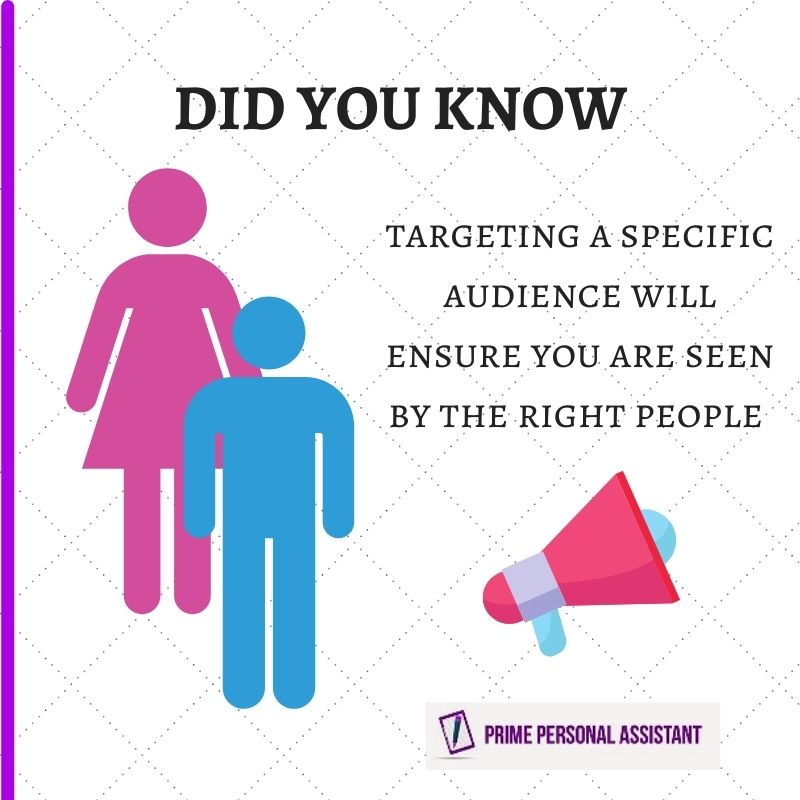How to find your target market

A target market is a group of people you advertise to that need your service
Why it is important to target a specific group of people
Knowing your target market is key to getting the results your business needs.
You could begin by asking the question, why can’t I just target everybody?
This is because it seems as if you would be excluding a large population of people by only targeting one group. You may also think you are excluding a large portion of potential revenue.
However, research has proved time and time again that targeting a specific audience that you understand is one of the most profitable moves you can make for your business.
It may be hard to understand why this was so important at first, but it becomes apparent when faced with the facts. People who visit your website do so for specific information or product/ service. If you haven’t taken the time to understand who this person is, what their problem is and how it makes them feel, you will never be able to convince them that you are the right person or business to solve it.
This is why it is important to know your customers so well that you already know their specific needs. This way, you can tailor your marketing to speak directly to them about the problems they face and how you solve them.
Being aware of your target market will inevitably increase conversions and lead to you becoming the go-to person for problem-solving.
Be aware of a problem and solve it
You need to know the problems you are solving. This may seem obvious, but the more you know about the problem, the better you will be at solving it. Ask yourself the following questions.
What is the problem you solve?
What are the benefits and values you can bring to the market?
What are your audiences’ specific problems?
What effect does the problem have on your audience?
If they do not fix the problem how is it going to affect them over time?
Create a customer profile
Now you can begin creating a profile about your target audience. Begin by thinking about what kind of person would have that problem. Take into account the following factors:
- Age – Which age bracket does your service/product appeal to?
- Gender – Is there a particular gender that is more likely to need your services?
- Location – Is there a particular geographic location that needs/uses your service/product the most?
- Social Class – What social class does your target audience consider themselves to be or fit into?
- Income Level – Which income bracket can afford your services or product?
- Education – What kind of education level is your audience? Graduates, students etc.
- Occupation – Which sector, industry or business types use or need your services?
- Which group suffers from the problem you solve the most?

Finding your target audience using information from a competitor.
Who is your competition’s target audience?
Who is their marketing geared towards?
Do they market specifically to women/ men?
Do they use a particular language or convey a particular style?
A good way of knowing your competitor’s target market is by paying a visit to their website or blog. If they allow comments, read them and click on the profile of anyone that commented and learn more about them. This is an easy way to see what kind of audience they are attracting.
When you visit your competitor’s website, note the following:
- Are they speaking to a particular group?
- Do they focus on a particular problem they solve?
- Do they focus on stats, start-ups, value, start-ups, or a specific niche?
If they are your main competitors, it is likely that your competitor has done their research and knows their target audience really well, so you should not have to look too hard to see who they are targeting and talking to. By taking just a few minutes to browse competitor websites, you should be able to learn more about what information your audience already likes and how they like it to be delivered.
Remember, not all your competitors will have the same target audience as yours. Find your main competitors with the same target market as your business, research where and how they can be found online and offline by searching as if you were your target audience looking for a solution. This way, you know how and where your audience is currently finding your competitor, and you can position yourself to be in the same or similar spaces as your target audience.
Finding your target audience on social media
Use the information in your client profile to locate your target audience on social media. Consider the following:
- Which social media platform would they be using?
- Is there a particular group they are likely to join?
- Is there a platform they are most likely to get a solution or advice on the problem?
Search on social media as if you were your target audience searching for a solution or discussing the problem that your business solves. The results will show you where your target audience is currently getting help with social media problems. This may be in a group you can join and position yourself to add value and attract customers.
You can also find out more information relating to your audience you may be able to get a glimpse of their personality and learn other things about them that you may not be able to discover elsewhere, as social media is naturally a casual environment which results in people and businesses revealing more of their character.
Finding your target audience offline.
Now that you know where your customers are online, you can begin tracking them down offline.
As you created a profile for your target market already, you know some information about their geographical location.
- Where do they go that you can go also?
- Does your audience attend networking events?
- Are they more likely to attend social events?
Attending events where your target audience is present will give you more opportunities to learn about them face-to-face.
If you can find an event specific to solving their problems, then this is even better.
Example: You are a virtual assistant and your niche is copywriting
There is a new ‘ Small business copywriting course.’
This would be an ideal situation for the virtual assistant in the above example.
If you can get yourself in a room full of your target audience that is already actively looking for a solution to a problem that you can solve. If you provide value, then it really just becomes a matter of great relationship and trust-building that will attract them to your business.
Marketing to your target audience
If you already have content, then you can tweak it to fit your target audience. As mentioned before, you can use the list of searches your target audience are most likely to use as content topics in future marketing and blog posts. This will help you with your S.E.O as you know they are already performing that search. You can also confirm how popular the search terms are according to the geographical location of your target audience by performing keyword research to be sure.
Most people don’t actually buy from you out of reasoning, especially when involving higher-priced goods or services. The main reason why people buy from you is due to an emotional factor that you will need to trigger by using the right words.
By this point, you should know their pain points very well, as well as the emotions your audience attaches to their problem.
You will need to express this to your audience by using emotionally triggering words like ‘imagine’ and ‘explore’.
Example
Page title – Imagine increasing your copywriting conversion 50% overnight by making 1 simple change.
Including subtitles like this will engage your customers and encourage them to create an image of their life with their problem solved. You will therefore be triggering their emotions, making them more likely to buy.
As usual, with most content online, your success depends on the S.E.O. and marketing of your content. You should be following your marketing plan and using the information you collected about your target market to ensure the right people see your content and that it is specific to your audience and their problem.
When all the steps above are strategically combined, you will see fantastic results.
Then share your content on the websites and in places where your target audience will be present.
If possible, when online answer questions relating to problems your target market are facing. Include a link to a related post to provide extra value.
This is a great way to get your brand in front of a group of people that are most likely already interested in the service you provide.
If you compiled a list of online groups that your audience is a part of, make sure to share your content there.
Use the information from the business cards you will collect during your offline target audience networking. Follow up with the potential clients/ partners you met by sending a casual email to say hi… nice to meet you and send them your content to solve their problem.
Don’t forget to share your content on social media platforms and your mailing list if you have one. You can also add a link to your content as part of your email signature.
All of your content should be talking directly to the group you identified as your target audience.
After identifying and finding your audience’s whereabouts, you should always continue researching them and their behaviours.
You can also do this by carrying out polls and general marketing surveys.

When it comes to marketing to your target audience, you might not get it right the first time, but as time goes on, your knowledge of the behaviour and needs of your audience will begin to attract them to you.
At the beginning of researching your target audience, you had to go and find them and learn everything about them.
By remaining consistent with your marketing plan, chances are they will have to come and find you.
By defining your core market, you are assisting your audience in helping them to solve a specific set of needs. This means you are not wasting time talking to the wrong people. Because you researched your target audience, you will save on overall marketing costs as your marketing will be more effective.
Don’t make assumptions about your audience – Research them to find out.
The research process should be continuous in order to stay relevant and on top of your game.
Need a Virtual Assistant?
Access profiles of 1000+ virtual assistants


